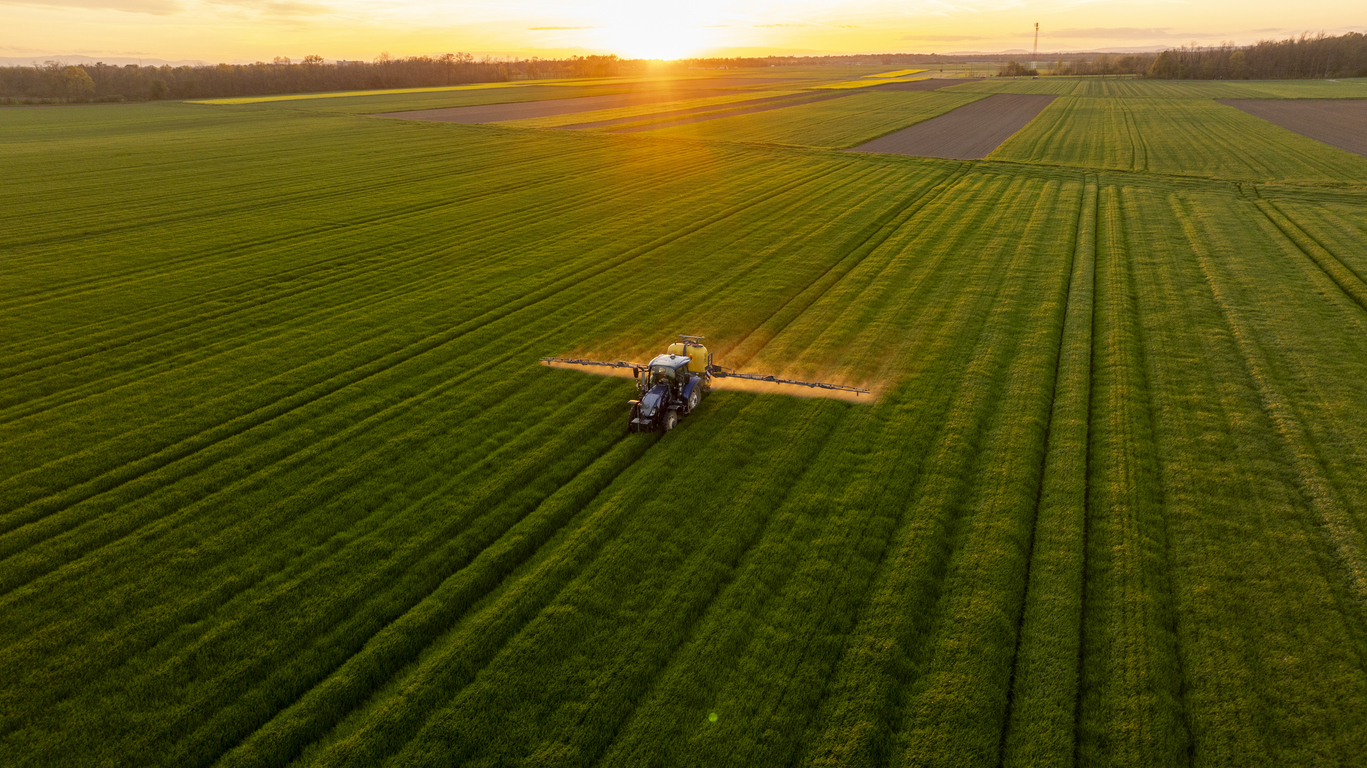The agriculture and construction equipment markets are happy to put 2024 behind them.
Despite some uncertainty over tariffs and a few other external factors, 2025 is poised to be a solid stepping stone toward even more prosperous years ahead.
That was the general message heard during the first AEM Business Intelligence Equipment Market Update webinar of 2025, held earlier this month. Tom Hopgood, a GlobalData economist, and Al Melhim, AEM’s senior director of business intelligence, shared insights into how the construction and agriculture industries have been faring.
Below are some highlights from the webinar…
Agriculture
As of December, low-horsepower tractor shipments in the U.S. were running 13% lower than the prior year. Canada was running 18% lower. Both countries were running 24% below the five-year average. Melhim chalks this up to the boom/bust cycle of the post-Covid 19 era, since most buyers of this type of equipment are non-professional farmers.
High-horsepower tractors and combines also struggled in 2024. Shipments were down 17% year-over-year in the U.S., although shipment volume was on pace with the five-year average. The situation was a little better in Canada. As of September, shipments were only down 10% year-over-year, and were actually 5% ahead of the five-year average.
“Softening commodity prices, low government support, high interest rates, and high input costs have translated to negative profitability of farming,” said Melhim. “This has had a profound impact on the purchase of capital-intensive equipment.”
Shipments of balers and foragers appear to have leveled off after some deceleration in 2023. “Unlike crop margins, livestock margins have improved over the last year,” Melhim said. “What’s been happening downstream in livestock operations seems to have improved demand for upstream inputs like equipment purchases.”
Moving forward, one thing to keep an eye on is inventory levels. Melhim said Days Sales of Inventory (DSI), a metric used to measure how long it will take to sell-down inventory based on recent sales average pace, is at a record high. DSI had come down a bit in 2022 when both low- and high-horsepower tractors hovered at around three months. Last year, DSI swelled to nearly eight months for low-horsepower tractors and four months for high-horsepower tractors. In Canada, it’s more like nine and five months, respectively.
Other factors to continue monitoring include the following:
- The positive effect lower interest rates and stabilized equipment pricing could have on equipment purchases, particularly by farmers who’ve deferred purchases over the past couple of years.
- Net farm incomes are also expected to improve this year, helping to bolster the market in 2026.
- Relatively young equipment fleets could put a drag on demand over the next few years, as could the dwindling bonus depreciation rates associated with the Tax Cuts and Jobs Act of 2017.
- Implications of tariffs and possibly a full fledge trade war on both the Ag equipment industry and the farming sector as both have high exposure to tariffs and retaliations given their complex global supply chains.
AEM members are encouraged to stay on top of emerging trends with our quarterly Equipment Market Update webinars. Agriculture and construction experts break down industry issues and pinpoint crucial changes in the landscape to help you refine your company’s strategy.
Construction
The global construction industry has seen up-and-down growth since the pandemic. Now things are setting up for more consistent year-over-year gains over the next several years, thanks in part to lower inflation and anticipated monetary easing by Central Banks around the world.
Global construction demand is expected to rise 2.77% this year, followed by growth rates of 3.7% and 3.92% in 2026 and 2027. China remains the largest construction market in the world. However, China’s impact on total global output isn’t what it used to be.
Emerging markets are poised to grow faster than advanced economies in 2025 (3.55% vs. 1.61%). While this is typically the case, a widening disparity ties to the impact of rising interest rates. Because residential construction accounts for a much smaller share of overall construction in emerging markets, and residential construction is largely driven by mortgage rates, emerging markets have been able to grow more substantially.
Residential construction has struggled, and it is set for another down year in 2025. A rebound is expected in 2026, though, as interest rates continue to come down.
The big growth areas in non-residential construction have been energy/utilities and infrastructure. Commercial construction also continues to improve, and it is expected to join other non-residential segments in exceeding its 2019 output level next year.
Output is outpacing advanced economies as a whole in the U.S. Output climbed 4.47% last year and is forecasted to grow another 4.02% this year. Looking ahead, annual growth is anticipated to hover just under 4% each year from 2026-2029.
The biggest sectors of growth have been energy/utilities, commercial, and infrastructure. Residential construction continues to recover and remains the largest segment of U.S. construction, accounting for roughly 40% of total output in 2025. Residential’s share is expected to drop to around 37% by 2029, however, as commercial sectors pick up steam and grow faster than residential.
Trump, Tariffs, and Frozen Funding
Both the agriculture and construction industries are keeping a close eye on potential tariff-induced trade wars.
In the agriculture industry, a trade war with Canada in particular could be troubling for U.S. manufacturers. Roughly 40% of U.S. ag equipment exports head north. Just a little over 10% of U.S. ag equipment imports come from Canada.
In the construction industry, steep tariffs would likely result in cost-push inflation, driving up the cost of building materials while softening construction demand.
There is also concern that the current administration’s freeze on federal spending could impact billions of dollars’ worth of projects that derived from the construction stimulus policies of the prior administration.
All of this remains to be seen as the agriculture and construction industries continue ahead in what is certain to be a very interesting year.
Learn More
In addition to its quarterly Equipment Market Update webinars, AEM continues to offer a wide range of other market data products. For more information, contact your Account Success Advisor.





